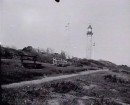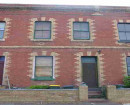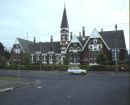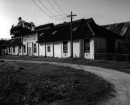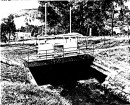Gordon Reserve
Cnr Spring and Macarthur Streets,Melbourne, MELBOURNE CITY
-
Add to tour
You must log in to do that.
-
Share
-
Shortlist place
You must log in to do that.
- Download report
Statement of Significance
SPRING STREET and MACARTHUR STREET EAST MELBOURNE, Melbourne City
VHR Number H0047
File Number PL-HE/03/0414
Other Names CARPENTERIA RESERVE
Municipality Melbourne City
Extent of Registration 1. The Gordon Reserve bounded by Spring Street and Macarthur Place, Melbourne and as defined in the Plan held by the Executive Director including the Stanford Fountain marked B1, the statue of General Gordon marked B2 and the statue of Adam Lindsay Gordon marked B3. The Plantings, lay out of the paths and the link fences are also included in the registration.
General References Melbourne's Historic Public Gardens, Rex Swanson, 1984, 38-46, City of Melbourne
Spatial Information -37.81234, 144.97407
Heritage Act Categories Heritage place
Item Categories
Item Group Item Category
Monuments and Memorials Statue
Parks, Gardens and Trees Reserve
Statement of Significance
What is significant?
The Gordon Reserve is a small triangle of land bounded by Spring Street and Macarthur Street, containing the Stanford Fountain (1870), the Gordon of Khartoum Memorial (1889), the Adam Lindsay Gordon Memorial (1932), the underground women's public toilet (c1924), and five Canary Island date palms. The Reserve was originally part of the Parliament House grounds, but it became detached from these in 1863 and was called Carpentaria Place.
Early photographs of the site reveal a small fountain, paths and some plantings. In 1870 the Stanford Fountain was placed on the site. William Stanford (1839-1880) designed and carved the fountain from bluestone when he was incarcerated at Pentridge Prison. The fountain, with its birds, dolphins and central cupid figure is well executed. It was originally accompanied by eight stone benches. Photographs dating from the 1880s show the fountain to have almost disappeared from view under the foliage of the exotic plantings including weeping willows, conifers and Moreton Bay figs.
In 1889 the Statue of Gordon of Khartoum was placed on the apex of the triangle at Macarthur and Spring Streets facing towards the Treasury Reserve. General Charles Gordon (1833-1885) was killed at Khartoum, in the Sudan in January 1885. Gordon was an important figure in imperial history and his exploits in China and the Sudan were the stuff of legend before his death. A memorial was suggested and funds were raised by public subscription. The Statue is a copy of Hamo Thorneycroft's statue that had been originally destined for Trafalgar Square. The base and pedestal on the Melbourne statue differs significantly from that in London with scenes from Gordon's life rather than representations of Fortitude and Faith and Charity and Justice. The Gordon Statue is one of the first statues erected of a public figure in Melbourne (preceded by Burke and Wills in 1865 and Redmond Barry in 1887). Gordon's memorial marked the beginning of the 'heroic age of colonial statuary' with another 11 monuments being erected in Melbourne in the next twenty years.
As a part of this memorialising process the Eight Hour Movement Monument was placed at the other apex of the triangle, facing Spring Street, in 1903. Later the Eight Hour Movement Monument was moved to its present site at Russell Street and Victoria Streets opposite the Trades Hall in 1923.
The Adam Lindsay Gordon Memorial, a well executed work of sculpture by Paul Montford, was erected on the site vacated by the Eight Hour Movement Monument in 1932. This was to mark the centenary of Gordon's birth. Adam Lindsay Gordon (1833-1870) was an important figure in colonial literary history. His poetry, although well received was not successful during his lifetime and his reputation was made after his death.
The women's underground public toilet is one of a group of eleven such facilities built by the City of Melbourne between 1902 and 1939. Underground toilets were then thought to be more discreet than street level toilets, as they were out of direct public view. This group is now unique in Australia.
The five Canary Island date palm trees that can now be found at the site were planted in the early 20th Century when the plantings were rationalised and the link fences were installed that delineate the site and cordon off the General Gordon Memorial. As a consequence the site has retained its Edwardian flavour with its mixture of memorials and greenery. The site was not renamed the Gordon Reserve until the 1960s.
How is it significant?
The Gordon Reserve is of historic and aesthetic importance to the state of Victoria.
Why is it significant?
The Gordon Reserve is of historical significance as an exemplar of colonial commemoration, celebrating the redemptive qualities of the Stanford fountain, as well as the grandeur of the British Empire of the General Gordon Memorial and the creation of an Australian literary tradition in the memorialising of specific figures such as Adam Lindsay Gordon.
The Gordon Reserve is of aesthetic importance for the high quality of workmanship in the Stanford fountain, and the quality of the execution of both the General Gordon and Adam Lindsay Gordon statues.
The Gordon Reserve is of aesthetic importance for the pleasing arrangement of the various landscaping elements including the Canary Island date palms, the link fences and the memorials within the reserve.
-
-
Gordon Reserve - Physical Description 1
Reserve with memorials.
Gordon Reserve - Historical Australian Themes
Commemorating signficant events and people
Gordon Reserve - Usage/Former Usage
Reserve with monuments and memorials
Veterans Description for Public
Gordon Reserve - Veterans Description for Public
The Gordon Reserve is a small triangle of land bounded by Spring Street and Macarthur Street, containing the Stanford Fountain (1870), the Gordon of Khartoum Memorial (1889), the Adam Lindsay Gordon Memorial (1932), the underground women's public toilet (c1924), and five Canary Island date palms. The Reserve was originally part of the Parliament House grounds, but it became detached from these in 1863 and was called Carpentaria Place.
In 1889 the Statue of Gordon of Khartoum was placed on the apex of the triangle at Macarthur and Spring Streets facing towards the Treasury Reserve. General Charles Gordon (1833-1885) was killed at Khartoum, in the Sudan in January 1885. Gordon was an important figure in imperial history and his exploits in China and the Sudan were the stuff of legend before his death. A memorial was suggested and funds were raised by public subscription. The Statue is a copy of Hamo Thorneycroft's statue that had been originally destined for Trafalgar Square. The base and pedestal on the Melbourne statue differs significantly from that in London with scenes from Gordon's life rather than representations of Fortitude and Faith and Charity and Justice. The Gordon Statue is one of the first statues erected of a public figure in Melbourne (preceded by Burke and Wills in 1865 and Redmond Barry in 1887). Gordon's memorial marked the beginning of the 'heroic age of colonial statuary' with another 11 monuments being erected in Melbourne in the next twenty years.
The five Canary Island date palm trees that can now be found at the site were planted in the early 20th Century when the plantings were rationalised and the link fences were installed that delineate the site and cordon off the General Gordon Memorial. As a consequence the site has retained its Edwardian flavour with its mixture of memorials and greenery. The site was not renamed the Gordon Reserve until the 1960s.
-
-
-
-
-
ROSAVILLE
 Victorian Heritage Register H0408
Victorian Heritage Register H0408 -
MEDLEY HALL
 Victorian Heritage Register H0409
Victorian Heritage Register H0409 -
NEW CHURCH TEMPLE
 Victorian Heritage Register H0852
Victorian Heritage Register H0852
-
'CARINYA' LADSONS STORE
 Victorian Heritage Register H0568
Victorian Heritage Register H0568 -
1 Alexander Street
 Yarra City
Yarra City -
1 Botherambo Street
 Yarra City
Yarra City
-
-






